One of the great illusions of Nature which has deceived scientific observers is the principle of curvature, which is everywhere present in ever-changing effect in every wave field, and in wave fields within wave fields throughout the universe.
Wave fields are bounded by planes of zero curvature, which act as mirrors to reverse all radiation which reaches out to these wave-field boundaries.
An example of such a plane of zero curvature is the equator of a bar magnet. Iron filings reaching out from either pole will curve gradually in the ever-changing pressure gradients which surround the poles. Science mistakenly calls these curved lines magnetic lines of force. (See Figures 75, 76, 77, page 101, Figure 173, page 122, and Figure 174, page 123.)
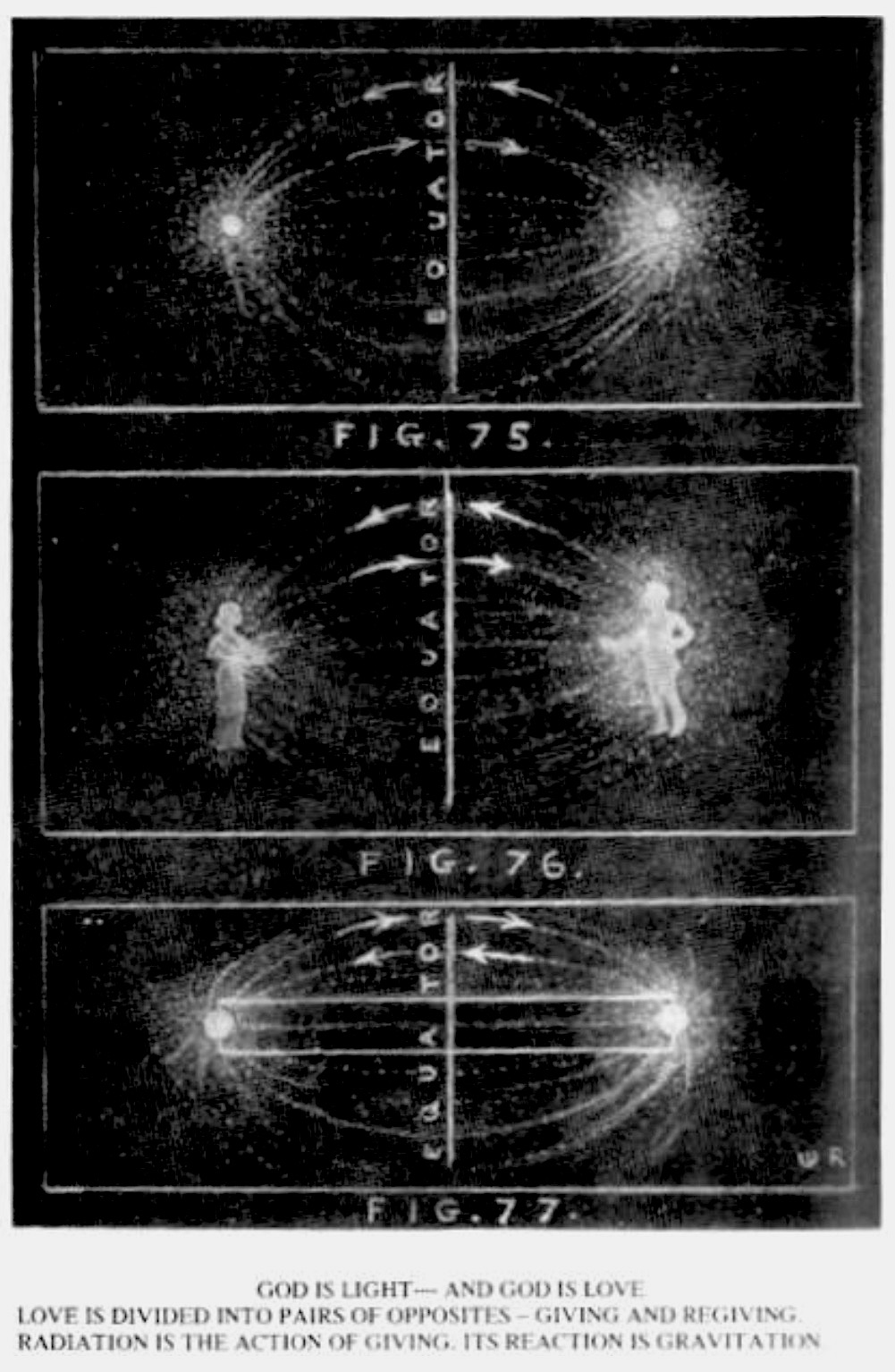
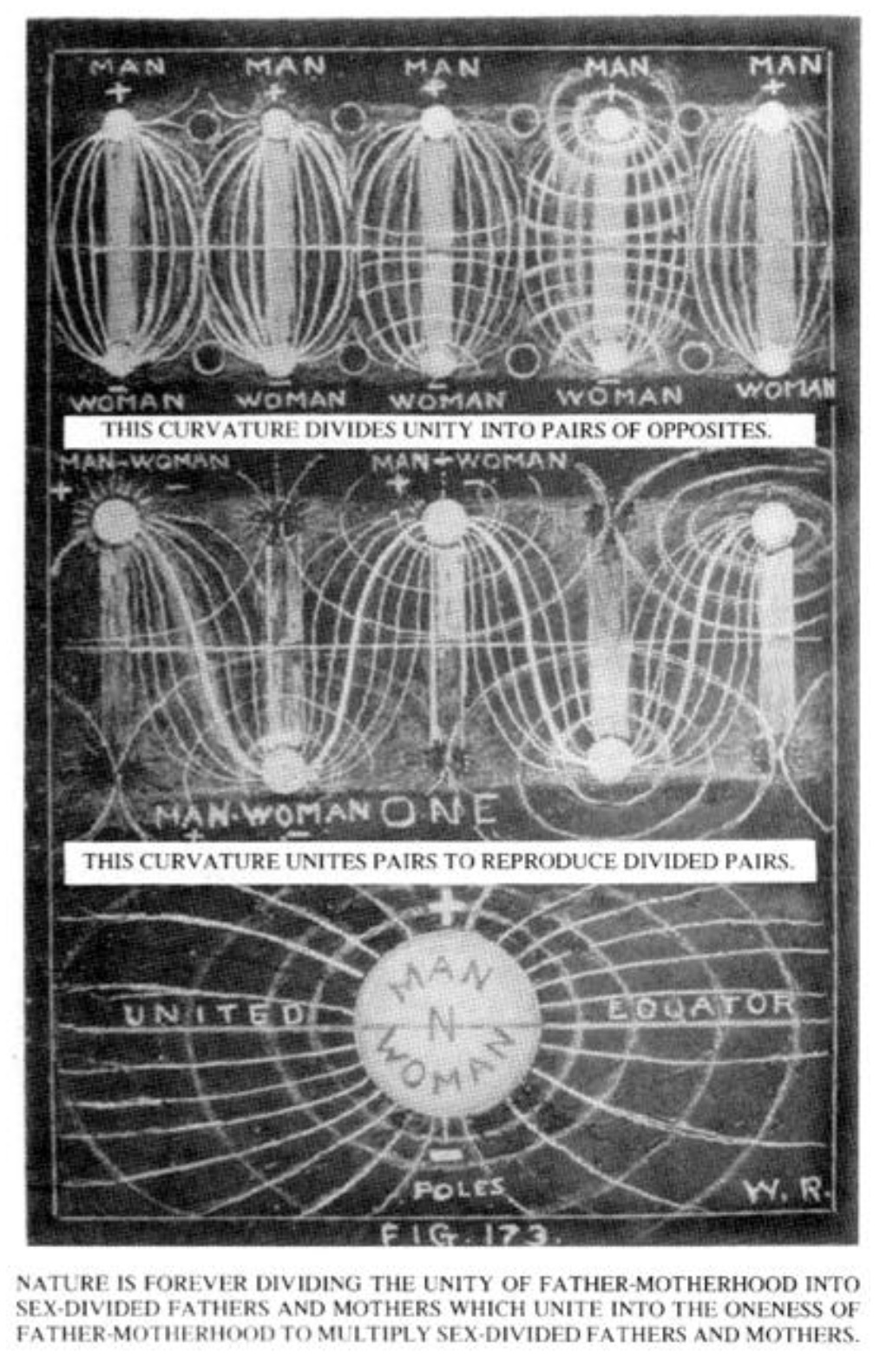
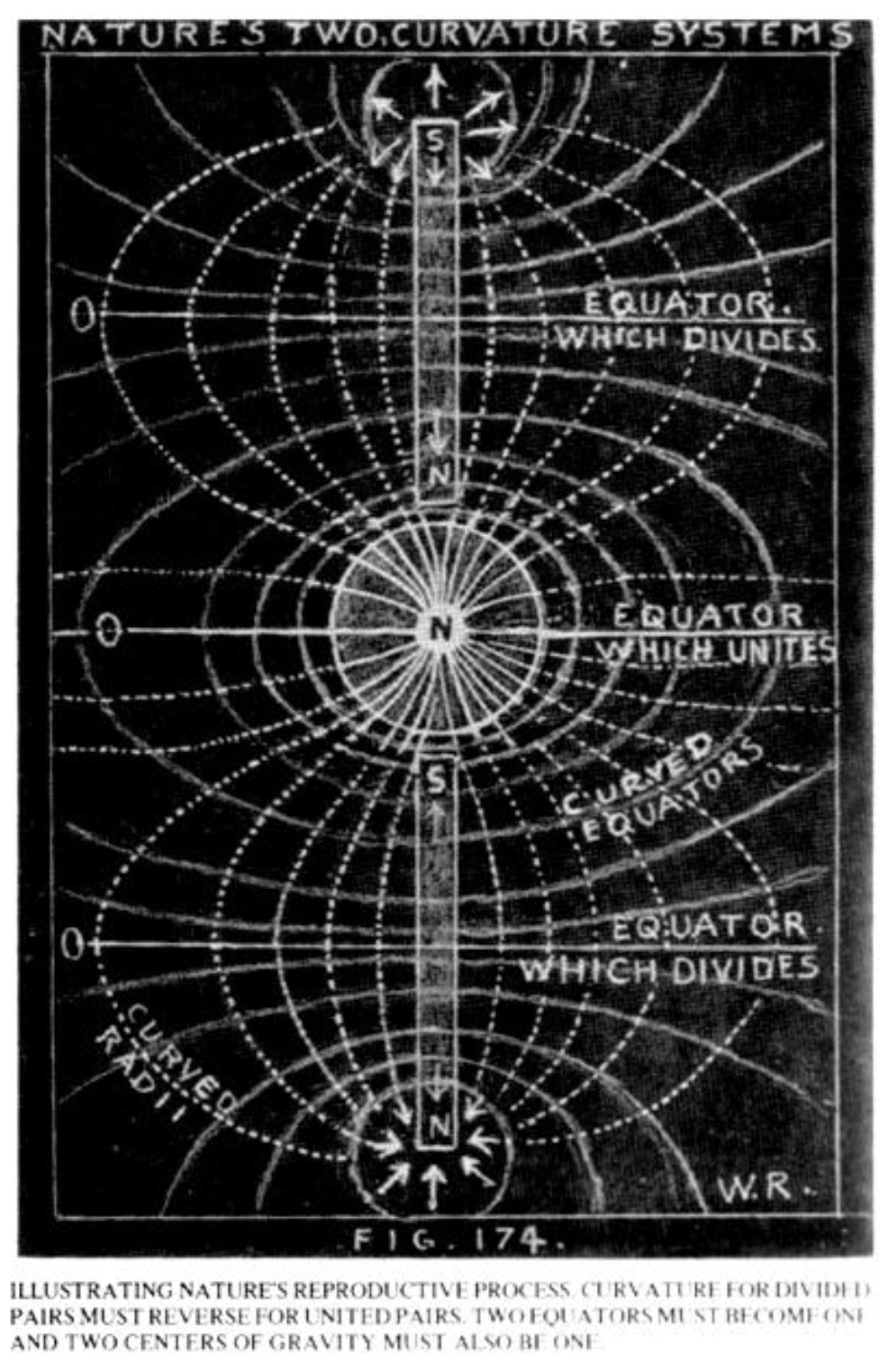
When these curved lines reach the equator which divides the two poles, they reverse and repeat their curvature as though reflected by a mirror.
There are no magnetic lines of force in Nature. These so-called curved lines are the radii of the spheres and spheroids which constitute this radial universe of prolating and oblating matter.
Radiation is an electric effect. It is not magnetic. Pressures which surround spheres and spheroids vary greatly in their equipotential pressure gradients. As radiation is maximum at solar or planetary equators and gravitation is maximum at their poles, the pressure gradients surrounding spheres or spheroids vary in their curvature to conform to these pressures.
Gravitation and radiation are both radial. Radii of either the inward direction of gravity or the outward direction of radiation cannot be projected through varying pressures without bending to conform to the varying densities of varying pressure gradients.
Just as a stick when thrust into water seems to suddenly break at the dividing plane of the two different densities, so likewise do the radii of incoming and outgoing light rays seemingly bend gradually as pressures gradually become more or less dense.
This divided universe is curved. Its two opposed conditions of gravitation and radiation are oppositely curved. Each has a system of curvature of its own and each system is opposed to the other for their purposes are opposed.
The system of gravity curvature is evidenced in spheroidal and ellipsoidal layer of equipotential pressure gradients which curve around gravity centers. The surface of the earth and Heaviside layers are good examples.
The curvature of gravitation is centripetal. It is controlled by the north-south magnetic poles. Its office is to extend bodies in motion from their wave axes to their wave amplitudes.
The system of radial curvature is evidenced in ellipsoidal layers of equipotential pressure gradients which extend radially away from gravity centers. Radial curvature has the same relation to the equators of suns and planets as gravity curvature has to their poles of rotation.
Good examples of radial curvature are the rings of Saturn, the Dumb-Bell Nebula, (See Figure 148, page 167) and the sun's corona.
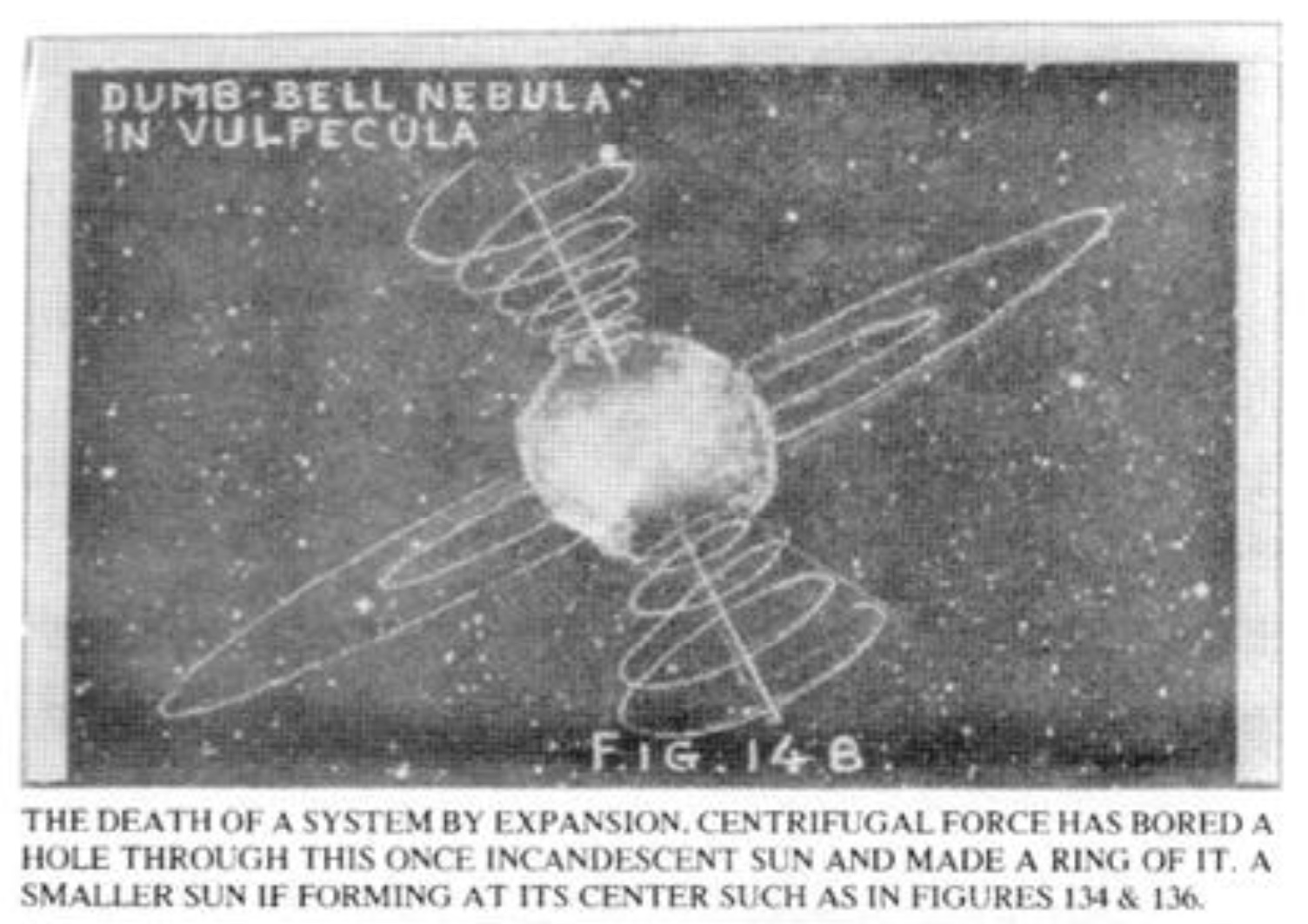
The system of radial curvature is centrifugal. It is controlled by two as-yet-unknown magnetic poles which will be amply described later as east-west poles.
The interrelations of these two pairs of poles are more fully set forth in Chapter XXI.
The entire matter of curvature is one of the many optical illusions which Nature is completely made up of. Curved pressure gradients act as lenses to bend radiating light outward as they pass through their concavity from an inward to an outward direction. The reverse takes place as gravitating rays pass through the convexity of light lenses from the outward to the inward direction.
Polarity surveys and measures these pressures, but electricity alone projects and retracts the light which causes these illusions. The supposition that magnetism is a mysterious force of some kind which attracts and repels has helped to build these wrong conclusions which the senses have deceived observers into believing. (See Figure 77, page 150; Figure 161, page 168; Figures 170, 171, 172, page 170; Figure 173, page 171; Figure 174, page 172.)
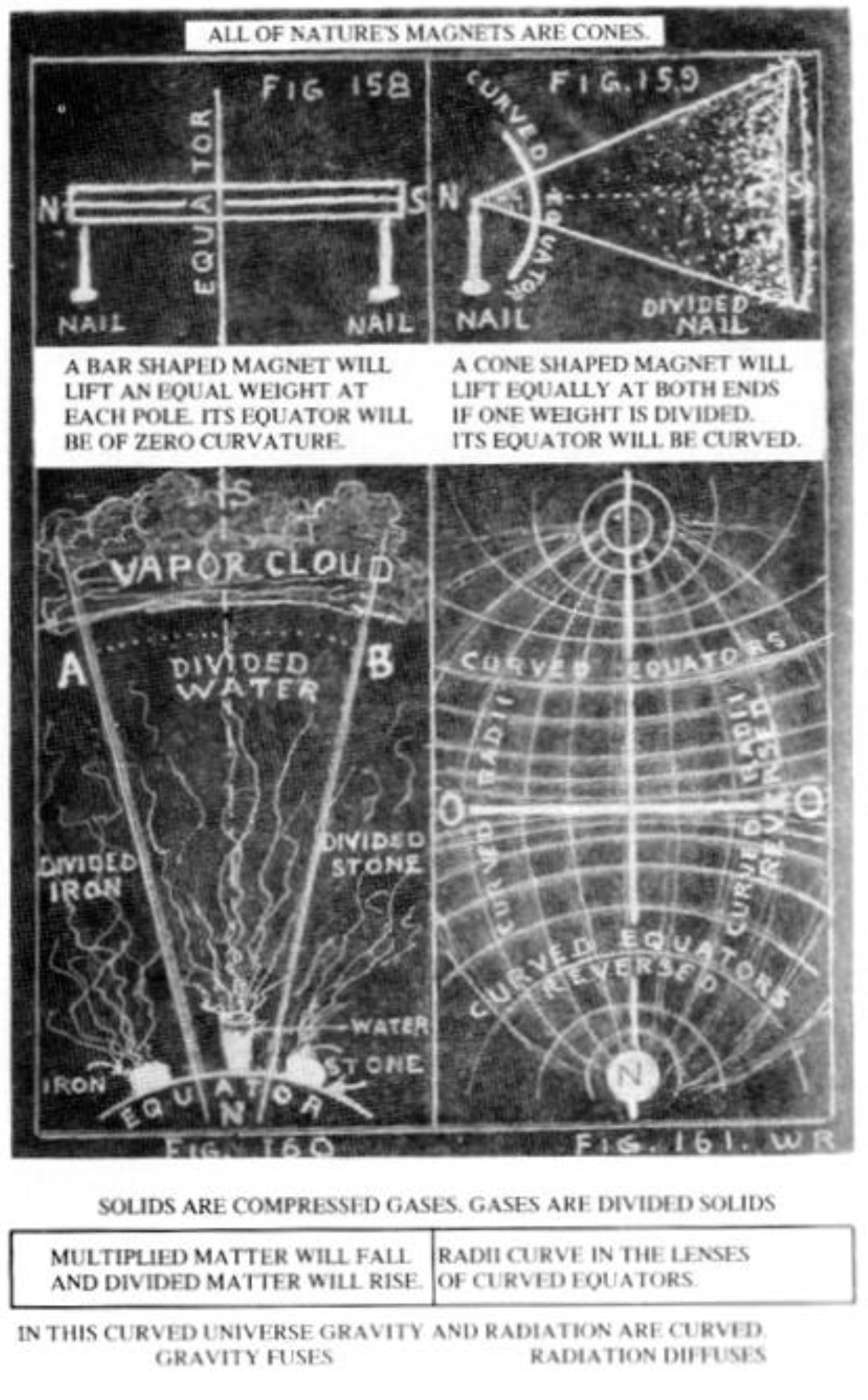
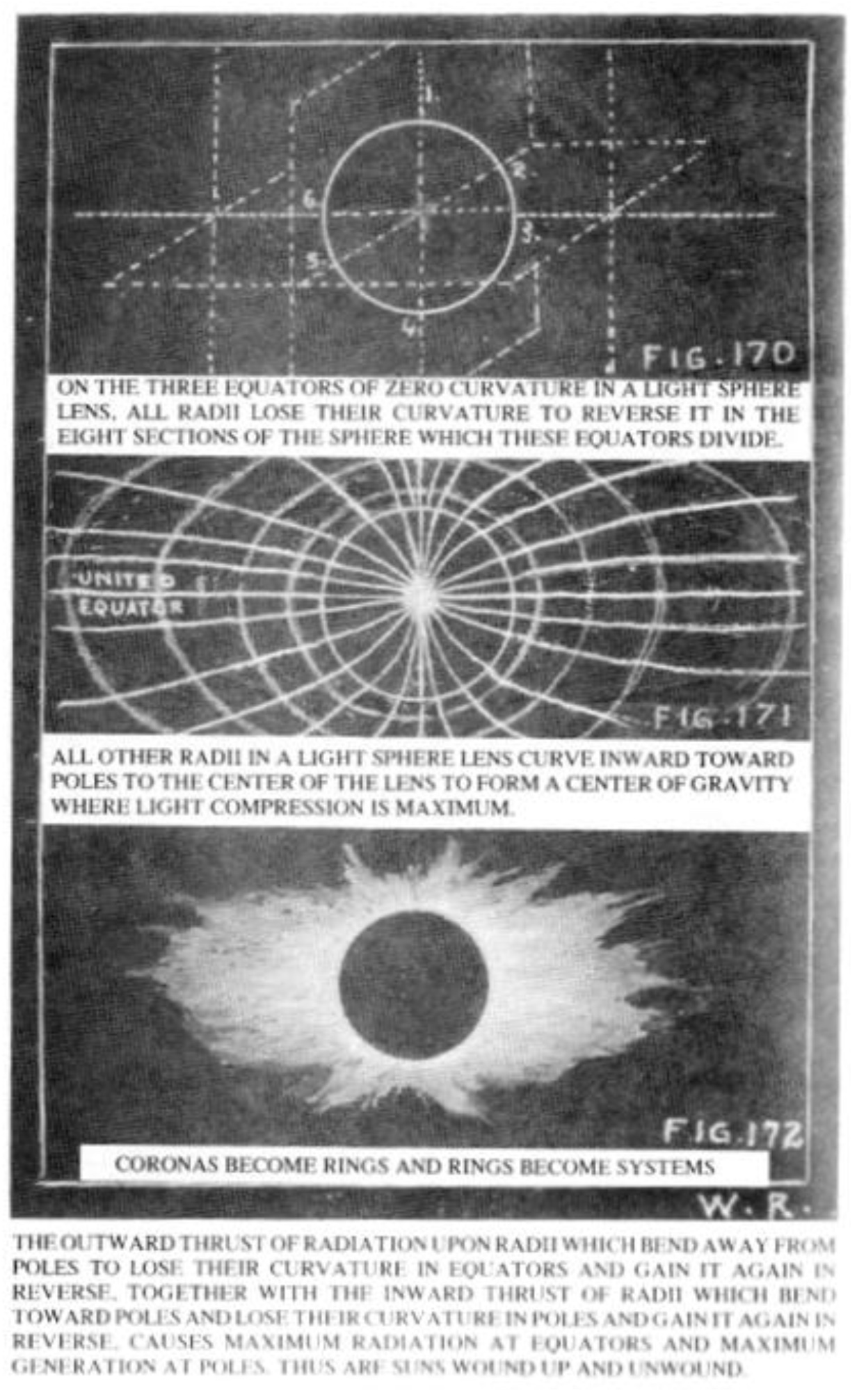
In our Home Study Course we have very carefully and plainly diagrammed the principle of two- way curvature within wave fields, and the principle of zero curvature which bounds wave fields and insulates the effect of one wave field from every other one by a principle of reversals, so we must let this brief description suffice for the purpose of this treatise. [Walter Russell, A New Concept of the Universe, pages 31-32]
Return to New Concept - Table of Contents
